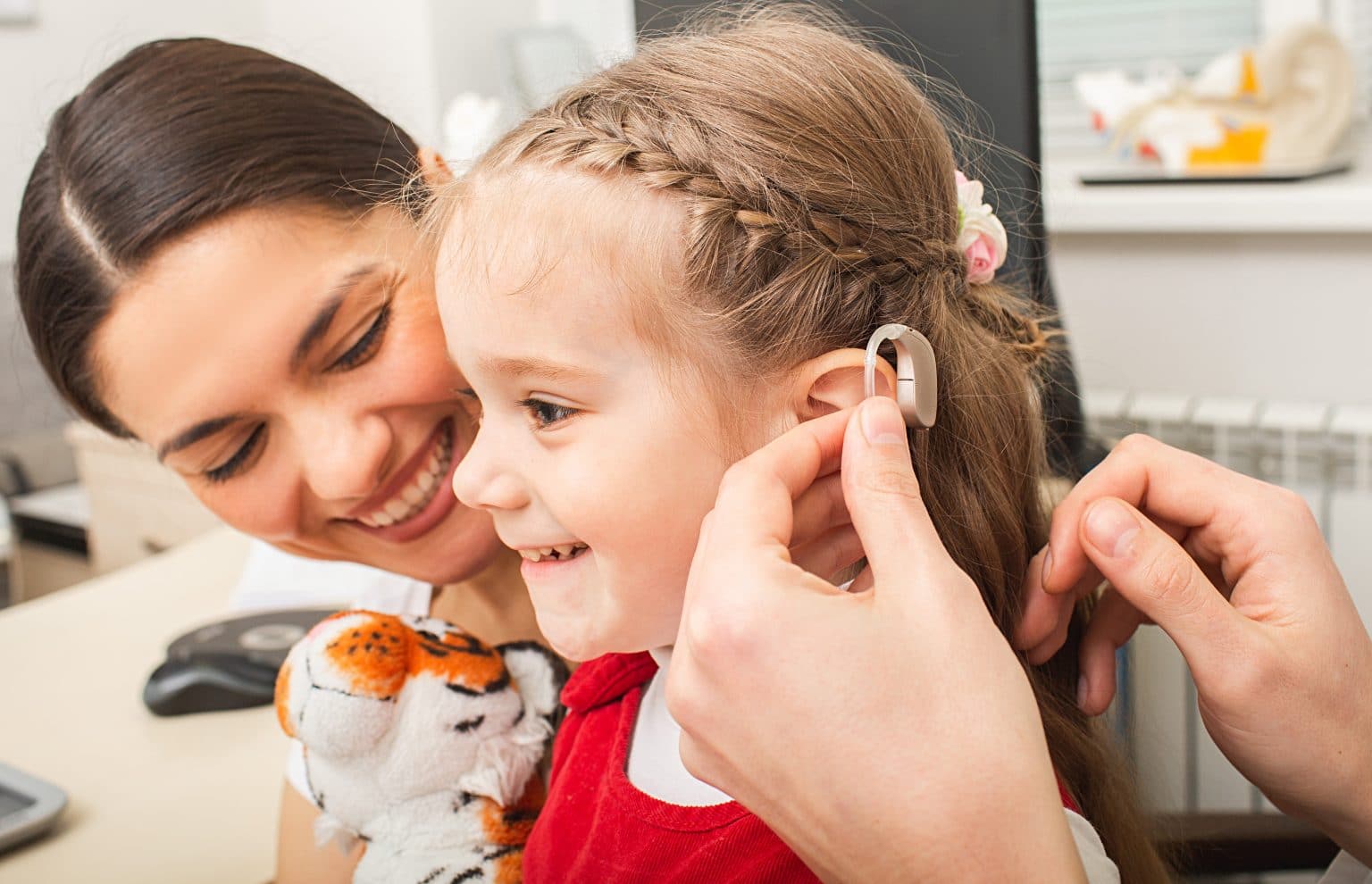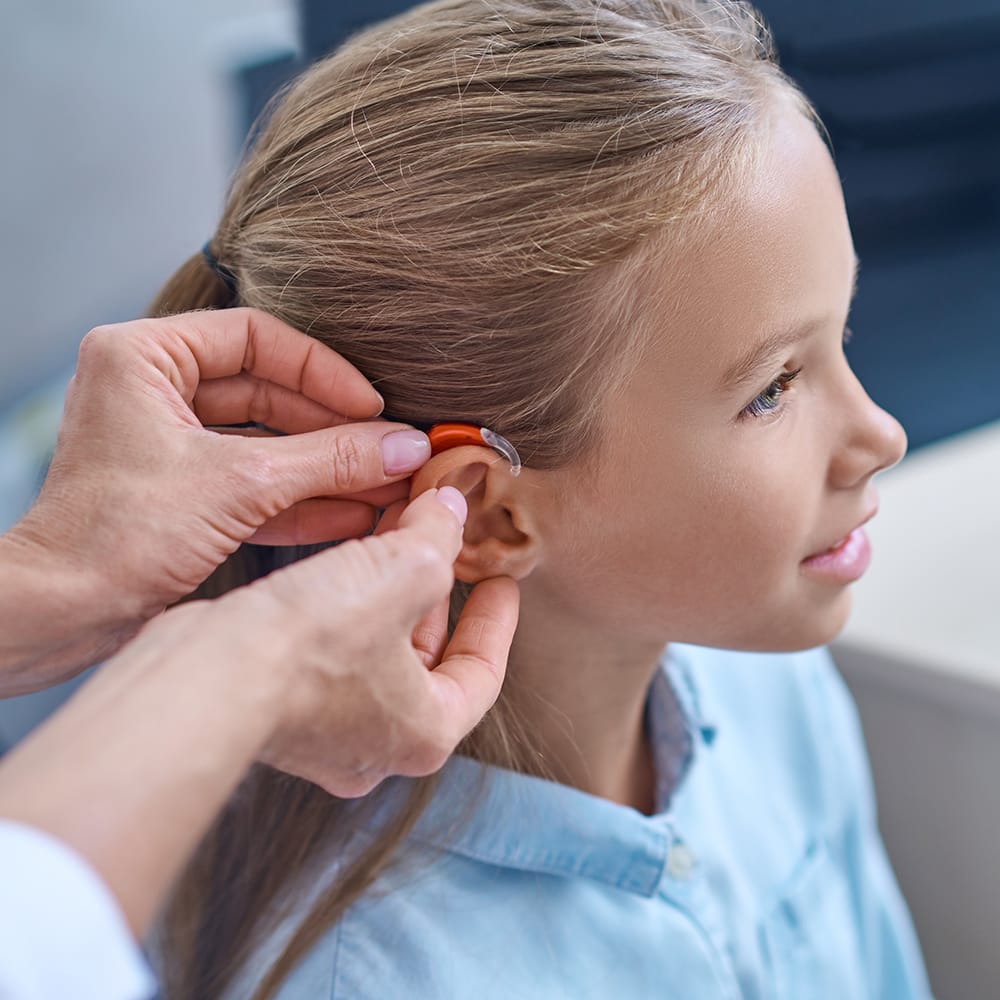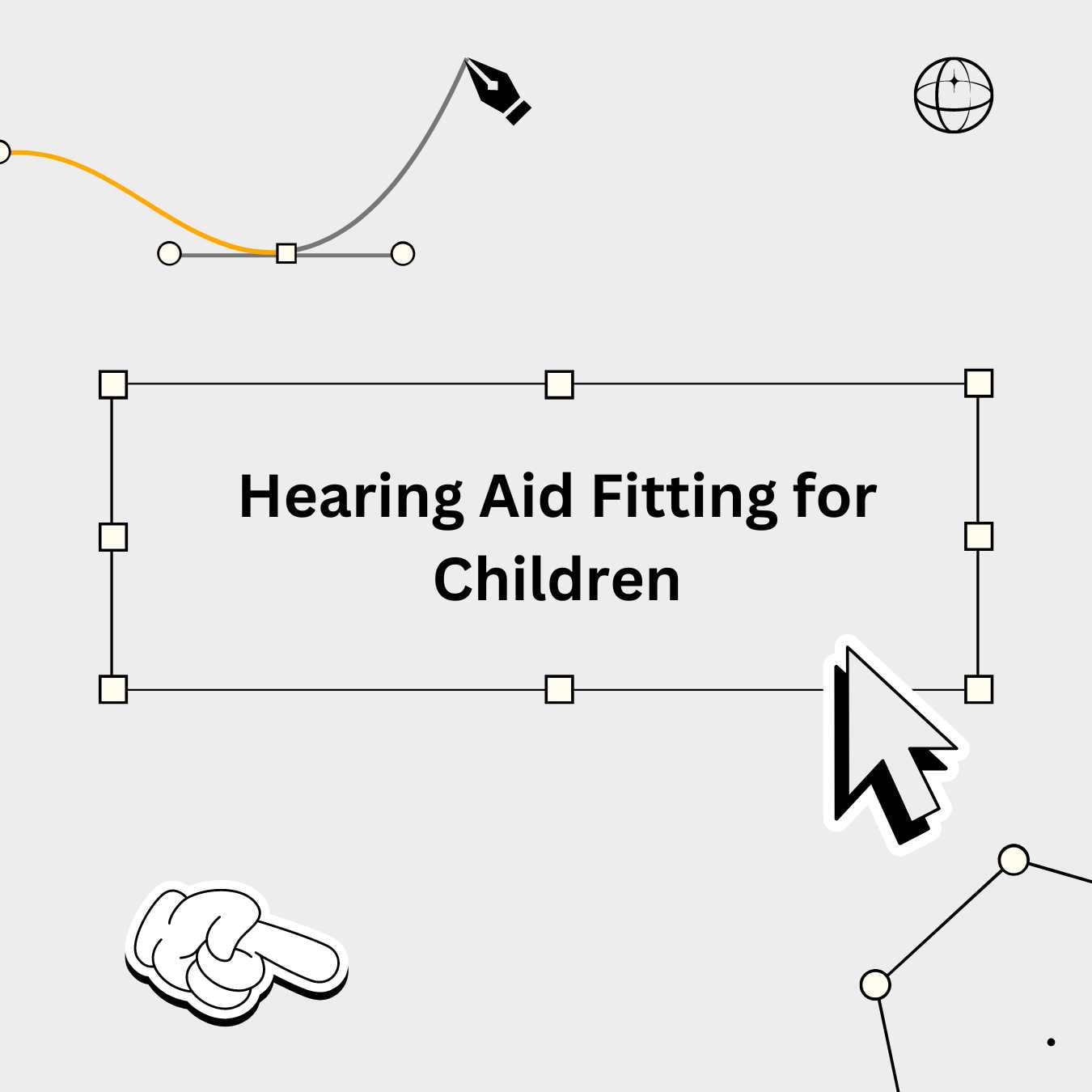Hearing aid fitting for children is a critical process tailored for each young patient’s unique needs. An audiologist typically performs this customization after thorough hearing assessments.
Ensuring proper hearing aid fitting for children not only facilitates optimal hearing but also supports their speech development, learning, and social engagement. Early intervention with the right hearing aid can profoundly impact a child’s overall development and well-being. The careful selection and fitting process involves considering the child’s level of hearing loss, ear anatomy, lifestyle, and potential for growth.
By combining technical expertise with a compassionate approach, audiologists make certain that the devices are comfortable, functional, and adaptable to a child’s active life. With the right support, children with hearing impairments can experience significant improvements in their communication skills and quality of life.
The Importance Of Early Intervention
The journey to clear hearing for children starts with quick action. Early intervention plays a pivotal role in a child’s hearing health. It can shape their speech, language development, and academic success. Addressing hearing loss promptly provides the best chance for children to achieve their full potential.
Identifying Hearing Loss In Children
Spotting hearing issues in kids early is crucial. Parents and caregivers should watch for signs of hearing loss. These can include no reaction to loud sounds or delayed speech. Pediatricians often conduct hearing screenings. Yet, if there is any doubt, an audiologist should run a thorough test.
- Infants might not startle at loud noises
- Toddlers could show little to no babbling
- Older children may have speech or learning difficulties
Benefits Of Timely Hearing Aid Fitting
Fitting hearing aids early can be life-changing. It can lead to successful communication skills. This boosts a child’s confidence and independence. Timely fitting of hearing aids also supports academic performance.
| Aspect | Impact of Early Fitting |
|---|---|
| Language | Builds a strong foundation for language skills |
| Social Skills | Encourages interaction with peers |
| Educational Achievement | Contributes to smoother learning |
Early use of hearing aids can have a profound effect. Engagement in everyday activities improves. Children also develop better coping strategies. They can navigate their environments more effectively. Recognizing the signs early and fitting hearing aids can open a world of sound possibilities for children.


Credit: eoent.com
Types Of Hearing Aids For Children
Choosing the right hearing aid for a child is crucial. Comfort, durability, and ease of use play a vital role in this selection. Let’s explore the different types available tailored to young users’ needs.
Behind The Ear (bte) Devices
Behind the Ear (BTE) hearing aids are popular for children. They sit securely behind the ear, with a tube that directs sound into the ear canal.
- Durable design
- Easy to handle and adjust
- Fit ears of all sizes
In-the-ear (ite) Options
In-the-Ear (ITE) devices are compact and fit entirely in the outer ear. They work well for mild to severe hearing loss.
- Less visible than BTE
- Custom fit for comfort
Considerations For Pediatric Use
When selecting hearing aids for children, several factors come into play:
| Consideration | Importance |
|---|---|
| Size and Growth | Choose aids that adapt to growing ears. |
| Safety Features | Look for tamper-proof battery doors. |
| Connectivity | Options for connecting to other devices. |
The Fitting Process Explained
Understanding hearing aid fitting for children is crucial for their development. This process helps kids hear the world clearer. Let’s explain how professionals fit hearing aids on children.
Initial Hearing Assessment
The journey to improved hearing starts with an initial hearing assessment. Doctors test how well a child hears different sounds. The results guide the fitting process.
- Sounds check in a quiet room
- Ear health examination
- Choosing aids based on hearing levels
Selecting The Right Hearing Aid
Next, experts select the perfect hearing aid. They consider the child’s age, ear size, and hearing needs. Comfort and style matter too.
| Age | Ear Size | Hearing Need | Style |
|---|---|---|---|
| Young children | Small | Variable | Friendly designs |
| Older kids | Larger | Specific | Discreet options |
Customization And Programming
The last step is customizing and programming the hearing aid. Tailoring the device ensures clear sound for each child.
- Adjusting volume controls
- Setting sound filters
- Final fit check for comfort
Parents play a key role in this phase. They give feedback on how the child responds to sounds at home.
Ensuring Comfort And Retention
Comfort and retention are key when fitting hearing aids for children. A snug fit ensures devices stay in place. It also makes sure children feel at ease all day. We must address each detail for the best experience possible.
Adapting To Ear Growth
Children’s ears grow rapidly, requiring adjustable hearing aids. Follow these steps for proper fit over time:
- Regular Check-ups: These confirm the hearing aids fit well.
- Select Growth-Accommodating Models: Choose aids that adjust as ears grow.
- Soft Materials: They bend with the ear, improving comfort.
- Professional Adjustments: Audiologists fine-tune the fit often.
Retention Accessories
To keep hearing aids secure:
- Select clips and cords that anchor to clothing.
- Use earmolds or sleeves for a better in-ear grip.
- Consider specialty bands or caps that cover the ears.
Safety and retention improve with the right add-ons.
Building A Habit
Creating a routine helps children remember their hearing aids. Use these strategies:
- Consistent Schedules:
- – Have set times for wearing and removing aids.
- Positive Reinforcement:
- – Offer praise for remembering their hearing aid.
- Fun Colors and Designs:
- – Choose appealing looks to excite children.
Turn hearing aid use into a simple daily task.
Family And Environment’s Role
Fitting hearing aids for children is not just about technology. It is about care and understanding. A supportive family and the right environment make a big difference. These elements help kids feel confident and happy. They also help kids use their hearing aids well. Let’s explore how parents and settings play a part in this crucial process.
Parental Involvement In The Fitting Process
Parents are the child’s first teachers. They know their child’s needs. They can say what works and what does not. Parents joining the fitting session is key. They learn how to help their child with the new device. Tips on care and maintenance are shared. They learn the signs of good and poor fitting. This knowledge is important to ensure comfort and effectiveness.
Educational Support And Accommodations
Schools need to know about the child’s hearing aids. This helps teachers support the child better. There may be need for:
- Special seating arrangements to help the child hear the teacher.
- Devices in the classroom that work with the hearing aid.
- Extra time during exams if needed.
These steps help the child learn without barriers.
Creating A Supportive Listening Environment
A good listening environment is quiet and has less echo. Background noise is low. This helps the child hear better. At home, simple changes can help:
- Carpets and curtains can reduce echo.
- Keeping the TV volume low.
- Facing the child when talking.
These actions show support and understanding.


Credit: www.hearingaidaccessory.com
Follow-up Care And Maintenance
Ensuring the best experience with a hearing aid for your child means more than just fitting the device. Follow-up care and maintenance are key aspects for optimal performance and comfort. Without regular attention and care, these crucial devices might let down the little ones depending on them for engaging with the world around them.
Regular Check-ups
Scheduled visits to an audiologist are a must to monitor your child’s hearing levels and to fine-tune their hearing aids. Children grow quickly, and their ears are no exception. These growth spurts can affect the fit and functionality of their hearing devices.
- Ensuring a proper fit to match their growing ears
- Testing the hearing aids for efficiency and clarity
- Updating settings for optimal audio input
Troubleshooting Common Issues
Everyday usage can lead to a variety of common issues with hearing aids. Recognizing and resolving these quickly avoids long periods of downtime.
| Issue | Solution |
|---|---|
| Feedback or whistling | Reposition or check for ear growth |
| No sound | Check battery or clean microphone |
| Ear discomfort | Schedule fitting review |
Long-term Care Strategies
Consistent routines and practices make long-term care manageable. Children also learn to take responsibility for their hearing health with proper guidance.
- Daily cleaning with soft, dry cloths
- Storing in a dry, safe place overnight
- Teaching your child simple maintenance tasks
Remember, investment in quality care for your child’s hearing aids will pay dividends in their daily life and development.


Credit: househearing.com
Frequently Asked Questions For Hearing Aid Fitting For Children
How To Prepare Kids For Hearing Aid Fitting?
A child’s comfort and cooperation are essential for a successful fitting. To prepare them, explain the process in simple terms. Use positive reinforcement about how the aid will help them hear better. It may also be beneficial to bring a favorite toy or comfort item to the appointment.
What Age Can Children Get Hearing Aids?
Children can receive hearing aids at any age, even as newborns. Early intervention is crucial for language development, so hearing issues are often addressed promptly. Pediatric audiologists specialize in fitting infants and children with the appropriate hearing devices.
Are Hearing Aid Fittings Uncomfortable For Children?
Properly conducted, hearing aid fittings should not be uncomfortable for children. Audiologists ensure the fitting is gentle and the devices are tailored to each child’s ears. Discomfort, if any, is usually minimal and temporary as the child adjusts to the new sensation.
Can Kids With Hearing Aids Play Sports?
Yes, kids with hearing aids can play sports. It’s essential, however, to use protective gear to safeguard the hearing aid during physical activities. Specialized sports clips and sweat-resistant covers are available to keep the aids secure and functional during play.
Conclusion of Hearing Aid Fitting for Children
Fitting hearing aids for children demands expertise and patience. It’s a vital step on their journey to improved hearing. Remember to consult with audiologists who specialize in pediatric care. They ensure your child receives the best device and fitting. A well-adjusted hearing aid can significantly enhance your child’s communication and learning experiences.
Let’s give them the gift of clear sound and a happier childhood.

